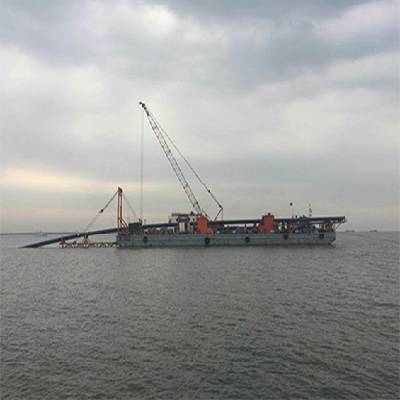The human ability to transform the earth is amazing! Various Submarine Pipelines laid by humans can be found even at the bottom of a few thousand
meters. Some of them stretch for thousands or even tens of thousands of
kilometers on the seafloor, like a link connecting seven continents and five
oceans.
These subsea pipelines include pipelines and cables laid on the seabed. Don't
underestimate these long pipelines, they have great uses! Submarine pipelines
can transport oil, natural gas and water over long distances, submarine cables
can transport electrical energy over long distances and realize long-distance
communication, and submarine optical cables can help people achieve long-distance communication. For example, most of the overseas calls we make are
through these submarine cables and optical cables!
With the continuous development of offshore oil and gas fields, submarine pipelines have become the fastest, safest and most effective means of
transporting oil and natural gas. It can realize continuous transportation, and
will not force the oil field to reduce production or stop production due to the
capacity limitation of offshore oil storage facilities and the untimely delivery of oil tankers. Since it is laid on the seabed, in order to ensure safety, the submarine pipelines must be able to withstand high pressure, wear, and corrosion. Depending on the specific subsea environment, the materials used in subsea pipelines are different, some are steel pipelines, some are cement pipelines, and some are plastic pipelines, such as polypropylene pipes.

In 1850, the world's first submarine cable was built between Britain and
France. Eight years later, the United Kingdom laid another submarine cable
connecting the United Kingdom and the United States on the bottom of the
Atlantic Ocean, realizing the transatlantic telegraph communication between the
European and American continents. The invention of the telephone further
promoted the construction of submarine cables, so that the submarine cables can
be used not only to generate telegrams, but also to make phone calls. By 1902,
the global submarine communication cable was built, which greatly shortened the
global communication distance in an instant.
In 1960, American scientists invented lasers, and people began to use the
characteristics of lasers to transmit in optical fibers to transfer information.
With the rapid development of Internet communications, the construction of
submarine optical cables has also developed rapidly. More than 100 countries and
regions in the world have established the most modern global communication
network through submarine optical cables. More than 80% of the world's
communication traffic is borne by submarine fiber optic cables, and many
submarine fiber optic cable systems have reached 10,000 kilometers in length.
According to incomplete statistics, the total length of the global submarine
optical cable is already close to 100 million kilometers.
You may ask, why are these cables not laid on land, but must be laid on the
seabed? It turns out that laying cables on the seabed has many advantages. First
of all, laying on the seabed does not require digging pits or supporting with
the same as laying on land, so the cost of laying is low, the investment is low,
and the construction speed is fast; secondly, after construction, it is not
susceptible to human interference and damage. For submarine optical cables,
seawater can also prevent interference from external electromagnetic waves,
increase the signal-to-noise ratio of the optical cable, and improve the
communication quality of the optical cable.
Today, the relationship between Submarine Pipelines and people's daily lives
is getting closer and closer. If there is no submarine pipeline, the
transmission of offshore oil and gas may be hindered; if there is no submarine
optical cable, we cannot support the global Internet, and we cannot surf the
Internet freely and make calls... except that the oil and gas and communications
industries need to lay pipelines on the seabed. Many other industries, such as
marine scientific research and marine military construction, need to lay cables
and optical cables on the seabed.
Note: If you found anything violating your copyright, please contact us, we would remove them as soon as possible.




